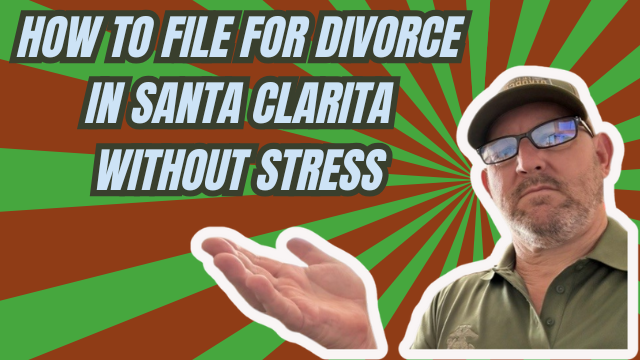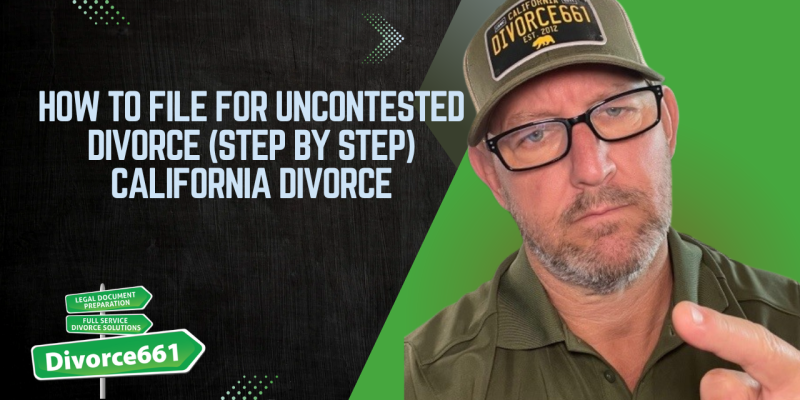How to File for Divorce in Long Beach Without a Lawyer
If you live in Long Beach and want to file for divorce without hiring an attorney, you can do it. Long Beach falls under Los Angeles County, which means your divorce paperwork must be filed electronically through the county e-filing system. That brings a few strict requirements, but with the right preparation you can complete the process accurately, avoid court appearances, and keep costs low.
Overview: What to Expect When Filing in Long Beach
Filing a divorce in Long Beach involves several essential steps that apply to every case, even if you and your spouse are in full agreement. The main elements are:
- E-filing your forms through an approved e-filing provider for L.A. County
- Completing and formatting forms precisely so the court accepts them
- Properly serving your spouse with the filed documents
- Exchanging the required financial disclosures
- Filing the judgment and finalizing the case
Step 1: E-file Correctly Through L.A. County
All Long Beach divorces are filed electronically through Los Angeles County. That means your documents must be submitted through an approved e-filing provider. The court will reject filings that do not meet their formatting or submission standards, so accuracy is not optional.
If even one detail is off, like missing boxes or incorrect attachments, your documents will be rejected.
Step 2: Complete and Format Your Forms Precisely
Paperwork must be filled out correctly and formatted precisely. Rejections commonly happen for simple issues like:
- Missing required boxes or signatures
- Incorrect attachments or missing exhibits
- Improper formatting that the e-filing system or the court clerk cannot accept
Take your time on each form and double check every field. Small mistakes can delay the entire process and lead to multiple rejections.
Step 3: Use an Approved E-filing Provider
You cannot upload documents directly to the court; they must go through an approved e-filing service. Make sure you choose a provider that supports Los Angeles County and follow their instructions for document types and file naming. Approved providers will guide you on accepted file formats and required cover sheets.
Step 4: Serve Your Spouse Properly
After you file, your spouse must be properly served with the divorce papers. Proper service is a legal requirement and must meet California rules. Improper service can lead to delays or the need to re-serve the documents. Options for service include personal service by a third party, service by mail with a proof of service, or service by a professional process server, depending on your situation.
Step 5: Exchange Financial Disclosures
Both parties must complete and exchange financial disclosures in every divorce case. These disclosures include income, assets, liabilities, and expenses. Even in amicable, uncontested divorces, full financial disclosure is required by law. Failing to exchange disclosures can prevent finalizing the divorce and may lead to sanctions.
Common Pitfalls That Cause Rejection
- Submitting incomplete forms or leaving required fields blank
- Not attaching required supporting documents or exhibits
- Using the wrong format or file type when e-filing
- Incorrect or improper service methods
- Missing or late financial disclosures
Real Example: How Small Mistakes Stall a Case
We often see couples start the filing process on their own and get overwhelmed by the details. One Long Beach couple filed on their own and had their paperwork rejected three times. Simple formatting and attachment errors caused delays. After we stepped in, we corrected the filings, completed the service and disclosures, and had their divorce finalized in just a few weeks. The difference came down to correct e-filing, proper service, and complete financial disclosures.
How a Flat Fee, Full-Service Option Works
If you want to avoid the cost of an attorney but still want professional support, a flat fee full-service divorce can be a good option. A full-service package typically includes:
- Preparing and formatting all required forms for L.A. County e-filing
- Submitting paperwork through an approved e-filing provider
- Handling service of process on your spouse
- Preparing and exchanging financial disclosures
- Filing the final judgment and closing the case
That approach lets you avoid court appearances and the hourly costs of a lawyer while getting experienced help to reduce rejections and speed up the process.
Who Should Consider Filing Without a Lawyer
Filing without an attorney can work well if:
- You and your spouse are largely in agreement on all issues
- Your financial situation is straightforward
- There are no complex custody, support, or property division disputes
- You are comfortable completing precise paperwork or have professional help available
If your case involves contested custody, complex assets, or significant disagreements, consulting a family law attorney may still be the best route.
Next Steps and How We Can Help
If you want to file for divorce in Long Beach without the cost and hassle of an attorney, we offer a flat fee full-service divorce solution that handles the entire process from start to finish. We prepare and e-file your documents, take care of service, ensure financial disclosures are exchanged, and file the judgment so you can avoid court. Our goal is to make the process simple, fast, and stress free.
To get started, schedule a free consultation at divorce661.com. We will review your situation, explain the steps, and help you choose the best path forward so you can move on with your life.
Final Tips
- Double check every form and attachment before you e-file
- Use an approved e-filing provider for L.A. County
- Serve your spouse according to California rules
- Exchange complete financial disclosures even if you agree on everything
- Consider a flat fee full-service option to avoid multiple rejections and delays





